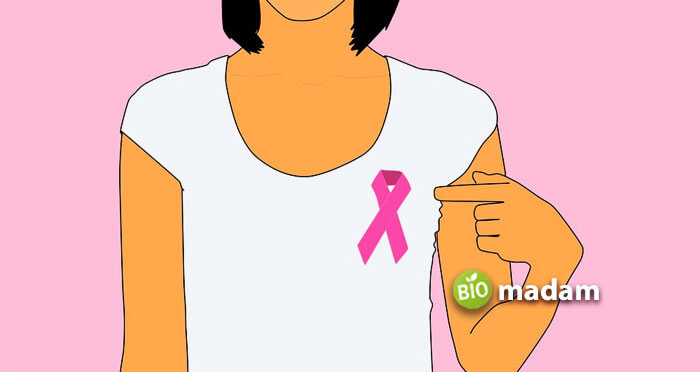If you’re not worried about getting breast cancer, it’s time to reconsider that thought. According to the American Cancer Society, breast cancer is the second leading cause of cancer death in women, with 1 in 8 individuals diagnosed every year.
Fortunately, the Society notes that your chances of survival improve if you’re screened and diagnosed earlier. This brief overview of the disease can equip you with the knowledge you need to protect you and your loved ones from any untoward outcomes.
What is Breast Cancer?
Breast cancer occurs when malignant cancer cells form tumors in the breast tissue. Though the condition mostly occurs in women, SymptomFind notes that breast cancer can manifest in people regardless of age or gender. The types of breast cancer also differ based on where they originate and if they’re considered invasive in nature.
Ductal carcinoma in situ is non-invasive breast cancer that originates in the milk ducts. While lobular carcinoma in situ begins in the breasts’ glandular tissue. On the other hand, invasive or infiltrating ductal carcinoma also originates in the milk ducts, it is capable of spreading to the surrounding tissue. Finally, invasive lobular carcinoma occurs in the glandular tissue and can also spread to other parts of the body.
There are also a few rare forms of breast cancer to look out for. Inflammatory breast cancer is a very aggressive condition that obstructs the breast’s lymph vessels, causing it to look red and inflamed. Breast angiosarcomas occur in the breast’s blood or lymph vessels. The rarest form of breast cancer is Paget’s disease, which begins with eczema-like symptoms on the nipple and spreads outward.
Who is at risk of developing Breast Cancer?

Individuals who have a family history of breast cancer, for instance, if your mother or aunt have previously been diagnosed with the condition, could get it down the line. Lifestyle-related factors like smoking and obesity can also increase your risk of developing breast cancer.
Some medical treatments — like the long-term use of birth control pills, radiation treatment to the chest for previous conditions, and hormone replacement therapy — can come into play as well. Individuals who began menstruation at a young age or begin menopause late, are also at risk, while people of color are more likely to develop aggressive forms of the disease.
What are the symptoms of breast cancer?
Covington News reports that breast cancer symptoms often include abnormal physical characteristics in the breasts or chest area. For example, the skin may swell, become irritated, or become dimpled like the skin of an orange. It’s not uncommon to notice a difference in the size or shape of the breasts.
The nipple may also change in appearance and position, and can even release discharge that is bloody or clear. Lumps as small as a pea or larger — or even an area of hardened tissue — near the breast or armpit may appear. Even unusual pain in the chest area should be noted.
How is Breast Cancer diagnosed?
Symptoms do not usually manifest in early-stage breast cancer, which is why the condition is most effectively detected through regular screening procedures like annual mammograms. These involve taking an x-ray of the breast to help doctors better detect abnormalities in breast tissue. Here on Biomadam we have mentioned that a breast ultrasound could also be used to further outline the features of these irregularities.
If the results of these imaging methods give doctors reason to believe a patient has breast cancer, a biopsy of the breast tissue will be required to definitively confirm a diagnosis. This will involve taking a small core of breast tissue with a needle so it can be studied more closely. From there, CT scans, blood tests, and chest x-rays may be used to determine if the cancer is widespread.
How is Breast Cancer treated?
Thanks to the extensive scholarship on breast cancer, there are multiple advanced options for treatment. If detected early, cancerous tissue is removed surgically while still easily manageable. For cancers that are more widespread or advanced, patients usually have the cancer cells shrunk via hormonal or chemotherapy beforehand.
Afterward, further medication may be prescribed to prevent cancer from coming back. If the cancer is hormone receptor-positive — or grows in response to the presence of estrogen or progesterone — this medication will block the production of these hormones. Further chemotherapy, radiation therapy, or targeted therapy may be recommended depending on the patient’s condition.

How can Breast Cancer be prevented?
It’s evident that both the treatment of breast cancer and its survival rates hinge upon its early detection. That’s why healthcare professionals urge those aged 40 and above to get an annual mammogram. Those below 40 are also encouraged to stay vigilant, especially if they have any of the risk factors listed above.
Medical experts interviewed by News 7, therefore, recommend a monthly breast self-examination, as this can make it easier to track any changes in the breasts or chest. They added that this could reduce your risk of dying from breast cancer by 40%. Ultimately, knowledge and a proactive mindset will keep you prepared for anything breast cancer might throw your way.

Hi, they call me Jenna, and I am also known for achieving a gold medal during my Ph.D. in science life. I always had a dream to educate people through my utmost writing hobby. So, I chose this blogging path, and Biomadam gave me this opportunity to present for them. I now stand to entertain you. Continue reading my articles & discuss if you’ve any confusion through the comment section below.

